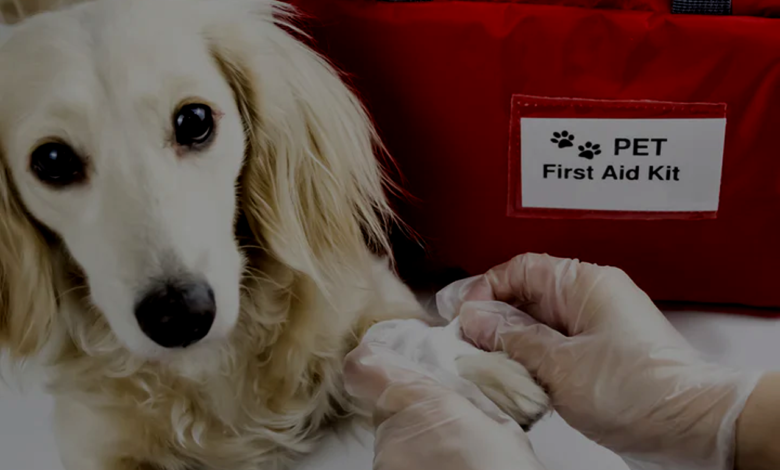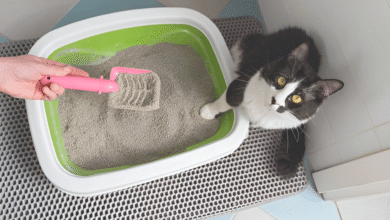
Emergency Preparedness Creating a Pet First Aid Kit
Pet first aid kit Be prepared for emergencies Learn essential supplies & steps to protect your furry friend in critical situations. Vet-approved guide.
When an emergency strikes, a pet first aid kit can be the difference between life and death for your beloved companion. Just like humans, pets are vulnerable to injuries, sudden illnesses, and disasters, making preparedness essential. Whether it’s a minor scrape, poisoning, or a natural disaster, having the right supplies on hand allows you to provide immediate care before professional help is available. A well-stocked pet first aid kit ensures you’re ready to act quickly, reducing stress and potentially saving your pet’s life.
Many pet owners assume emergencies won’t happen to them until they do. Unlike humans, pets can’t communicate their pain or needs clearly, so recognizing distress signs and responding promptly is crucial. A pet first aid kit tailored to your animal’s specific needs whether a dog, cat, or small animal ensures you can stabilize injuries, prevent infections, and manage emergencies effectively. In this guide, we’ll explore the must-have items, essential first aid skills, and expert tips to keep your pet safe in any situation.
Emergency Preparedness Creating a Pet First Aid Kit
Why Every Pet Owner Needs a First Aid Kit
Pets, much like humans, are susceptible to injuries, sudden illnesses, and environmental hazards. Whether it’s a minor cut, poisoning, heatstroke, or a natural disaster, being unprepared can lead to unnecessary suffering or even fatal consequences. A pet first aid kit is not just a convenience it’s a necessity for responsible pet ownership. Emergencies can happen at any time, and veterinary care may not always be immediately accessible. In such cases, having the right supplies on hand allows you to stabilize your pet’s condition until professional help arrives.
Essential Items for Your Pet First Aid Kit
Basic Medical Supplies
Gauze pads and rolls for covering wounds and controlling bleeding. Adhesive tape to secure bandages without sticking to fur. Antiseptic wipes or solution for cleaning wounds and preventing infection. Hydrogen peroxide (3%) Useful for inducing vomiting in cases of poisoning (only under veterinary guidance). Scissors with blunt tips for cutting bandages or trimming fur around injuries. Tweezers To remove splinters, ticks, or debris from wounds. Disposable gloves to maintain hygiene while treating your pet.
Medications and Treatments
When stocking medications in your pet first aid kit, always prioritize safety and veterinary guidance. Pet-safe pain relievers must be specifically formulated for animals, as human medications like ibuprofen or acetaminophen can be toxic. For allergic reactions, antihistamines like diphenhydramine may be used, but only in doses approved by your vet weight and species affect proper dosage. A sterile eye wash solution helps rinse away dirt or chemicals without irritating delicate eyes, while electrolyte solutions formulated for pets can combat dehydration from illness.
Emergency Tools and Documents
A pet-specific digital thermometer is essential since animals have different normal temperature ranges than humans. Always lubricate the tip before use. A muzzle or soft cloth provides safety when treating injured pets even docile animals may snap from pain or fear. Your kit should include an emergency contact list with your regular vet, 24-hour emergency clinic, and pet poison control. Keep medical records on hand vaccination history helps avoid unnecessary revaccination during emergencies.
Comfort and Safety Items
A blanket or towel serves multiple emergency purposes it provides warmth for shock, acts as a restraint for injured pets, or can be fashioned into a makeshift stretcher for transport. Collapsible food and water bowls are vital for evacuation scenarios, ensuring your pet stays nourished and hydrated when displaced. Always pack an extra leash and secure carrier in your kit, as emergencies may require sudden travel, and these items help keep your pet safe during chaotic situations.
Customizing Your Pet’s First Aid Kit
Every pet has specific needs that should be reflected in your pet first aid kit. For dogs, include paw balm to protect against cracked pads from extreme temperatures and a tick removal tool for outdoor safety. Cats benefit from styptic powder to stop nail bleedings and calming spray to reduce stress during emergencies. Small animals like rabbits and guinea pigs require critical care formula for emergency feeding and a heating pad (specifically designed for small pets) to prevent hypothermia. Always research species-specific needs and consult your vet when customizing your kit what works for one animal could be dangerous for another.
First Aid Techniques Every Pet Owner Should Know
Handling Bleeding Wounds
For minor bleeding, apply firm but gentle pressure with sterile gauze for 3-5 minutes. If bleeding continues, layer a clean cloth over the wound, maintain pressure, and rush to your veterinarian persistent bleeding may indicate a serious injury requiring professional intervention.
Performing CPR on Pets
For unconscious pets, first check for breathing and a heartbeat if absent, begin CPR with 30 chest compressions (at 100-120 beats/min) followed by 2 rescue breaths, repeating the cycle. Always have someone call your vet immediately.
Treating Burns or Heatstroke
For burns or heatstroke, immediately cool the area with lukewarm (not cold) water to avoid shock and move your pet to shade. Offer small sips of water to prevent dehydration, but avoid forcing fluids seek veterinary care ASAP, as heatstroke can cause organ damage. Monitor breathing and pulse while transporting to the vet.
Dealing with Poisoning
If poisoning is suspected, immediately identify the toxin (container, plant, or substance) and call your vet or pet poison control. Never induce vomiting unless directed, as some toxins can cause more harm coming back up. Keep your pet calm and transport to the clinic with the toxin’s packaging for reference. Time is critical act fast but follow professional guidance.
Maintaining and Updating Your Pet First Aid Kit
To ensure your pet first aid kit remains effective in emergencies, regular maintenance is key. Check medication expiration dates quarterly and promptly replace any expired or used items. Store the kit in a dry, easily accessible spot that all family members know about preferably near your human first aid supplies. Inspect supplies routinely for damage, especially bandages and ointments that may degrade over time. Most importantly, train everyone in your household on how to use each item properly, as hesitation during a crisis could waste precious moments.
Read More: Dog Obedience Classes in Texas Which Ones Are Worth It
Conclusion
A well-prepared pet first aid kit is one of the most important tools a responsible pet owner can have. Whether facing minor injuries or life-threatening emergencies, having essential supplies readily available allows you to act quickly and effectively when every second counts. By assembling a customized kit with medical essentials, emergency tools, and your pet’s specific needs in mind, you’re not just storing supplies – you’re preserving peace of mind and potentially saving your beloved companion’s life.
Remember that while a pet first aid kit equips you to handle urgent situations, it should never replace professional veterinary care. Always follow up with your veterinarian after administering first aid, and regularly refresh your kit’s contents to ensure everything remains sterile and effective. With proper preparation and knowledge, you’ll be ready to face any emergency with confidence, giving your pet the best possible chance at a full recovery. Your foresight today could make all the difference when crisis strikes tomorrow.
FAQs
How often should I check my pet’s first aid kit?
Inspect your kit every 3 months, replacing expired medications and restocking used items.
Can I use human first aid supplies on my pet?
Some items (like gauze) are safe, but medications should only be given under veterinary supervision.
What should I do if my pet ingests something toxic?
Call your vet or pet poison control immediately—do not induce vomiting unless instructed.
Should I carry a first aid kit when traveling with my pet?
Yes, a portable version is essential for trips, hikes, or evacuations.
Where should I store my pet’s first aid kit?
Keep it in an easily accessible place, away from extreme temperatures or moisture.







